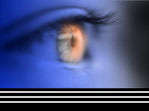Immigrant/Native Digital Divide
6/8/2009
The classification of users
of the technological advancement in the present age by the Prensky makes me a digital immigrant.
According to the writer, a digital native is one born and brought
up in a digital environment and is virtually hooked and connected to the technological world 24/7. “They have spent their entire lives surrounded by and
using computers, videogames, digital music players, video cams, cell phones and all the other toys and tools of the digital
age, they are integral parts of their lives. ” Says Marc Prensky. (Part 1, page 1).
However, a digital immigrant,
Marc Prensky states, “is one who was not born into the digital world but have, at some later point in their lives, become
fascinated by and had adopted many or most aspects of the new technology, and always will be compared to use them.”
(Page 1, part 1).
I fall under the digital
immigrant status, because I first learnt how to use computers at my work place, in Ghana.
Since then I have come to like them because computers make it easier to do things.
It enables me to be accurate and produce quality jobs. It also helps me
in my school assignments. The internet enables me to send and receive messages
faster than through the mailing system. In fact, I prefer communicating by email
to the phone, because you can access the information any time convenient to you. However,
there are two persons, one in Florida and another in Pennsylvania doing our billing services that I have to call before I
get response to emails sent them.
I use
Verizon DSL both at home and work, and I plan to login to work on the course between 8pm and 9pm, since I work in a night
shift and I also work part-time in the mornings. Naturally, after 8 hours night
shift and 3 hours morning hours I come home at 1 pm and have to sleep and rest before I can make any meaningful attempt to
study.
Coming
back to what Prensky’s calls “Immigrant/Native digital divide”, I wish to develop the skills that can make
me relevant to today’s rapid digital technological advancement since I do not want to speak an “outdated language
nor struggle to make myself understood by a population that speaks an entirely new language” (part1 page 2). The digital technology is here with us, it is in the driving seat dictating and directing our actions,
and as Prenky notes “no matter how much the Immigrants may wish Digital Native students learn the old ways, it is highly
unlikely the Digital Natives will go backwards. (part 1 page 3).
References:
- Prensky, Marc. Digital Natives, Digital Immigrants. 2001. Marc Prensky.com. <http://www.marcprensky.com/writing/Prensky%20-%20Digital%20Natives,%20Digital%20Immigrants%20-%20Part1.pdf>

